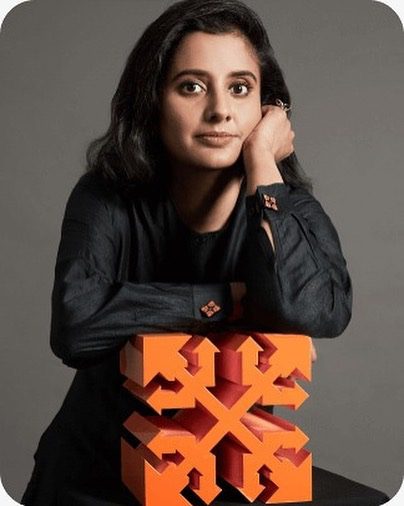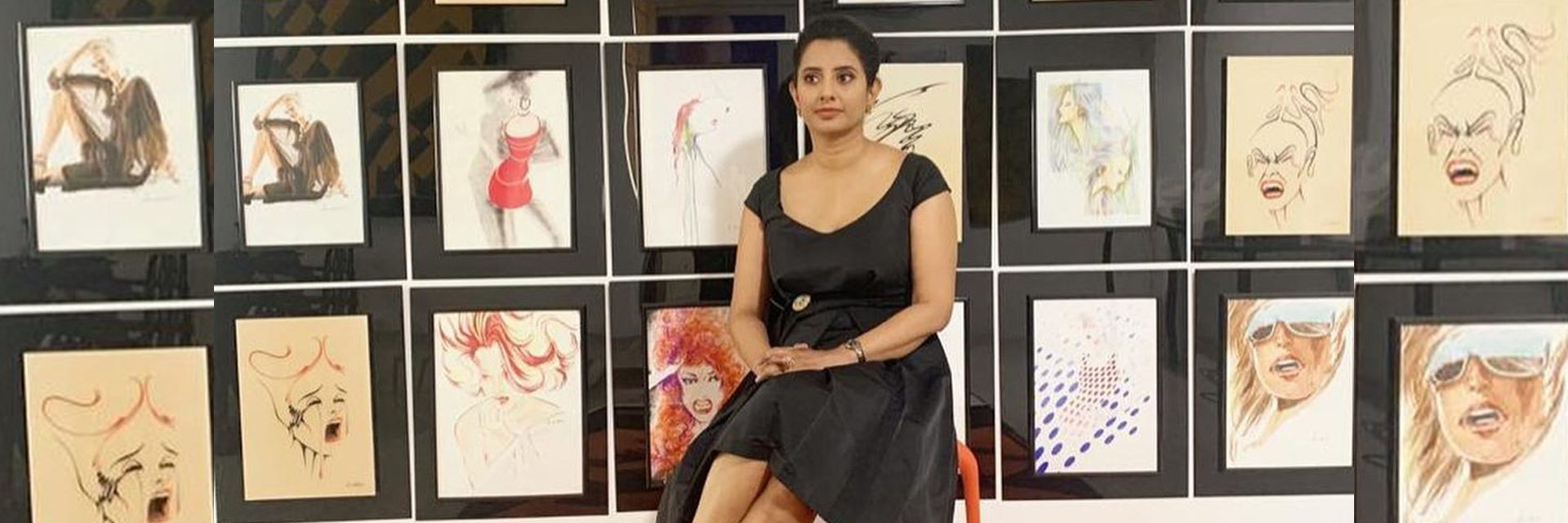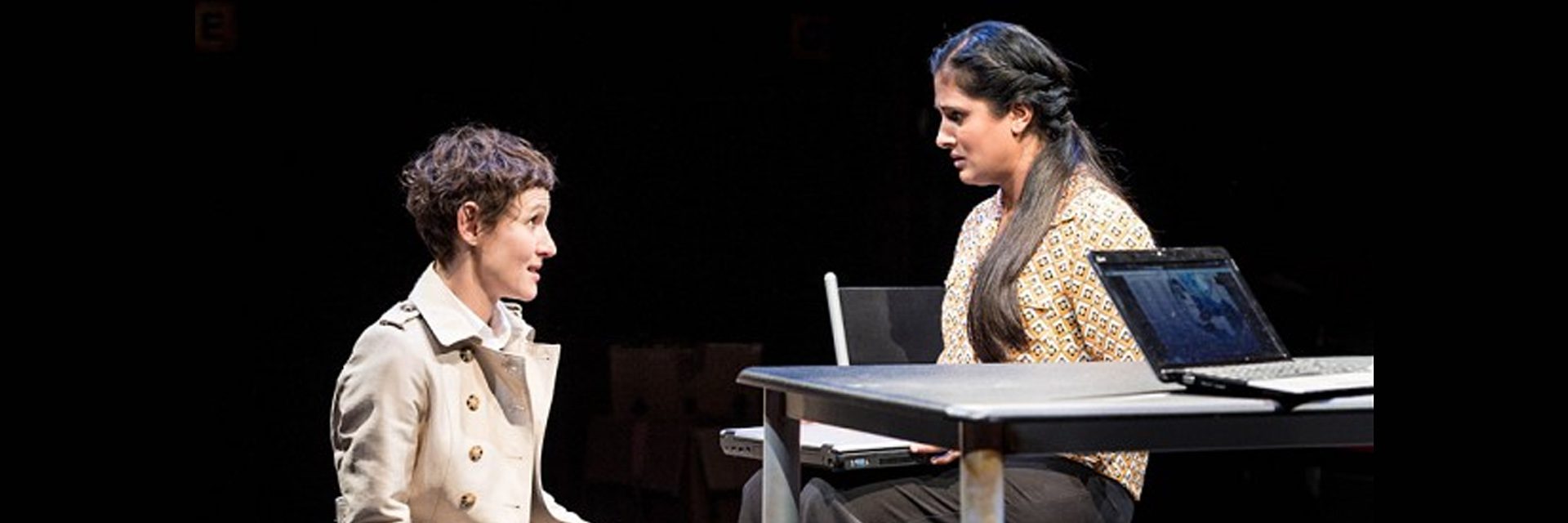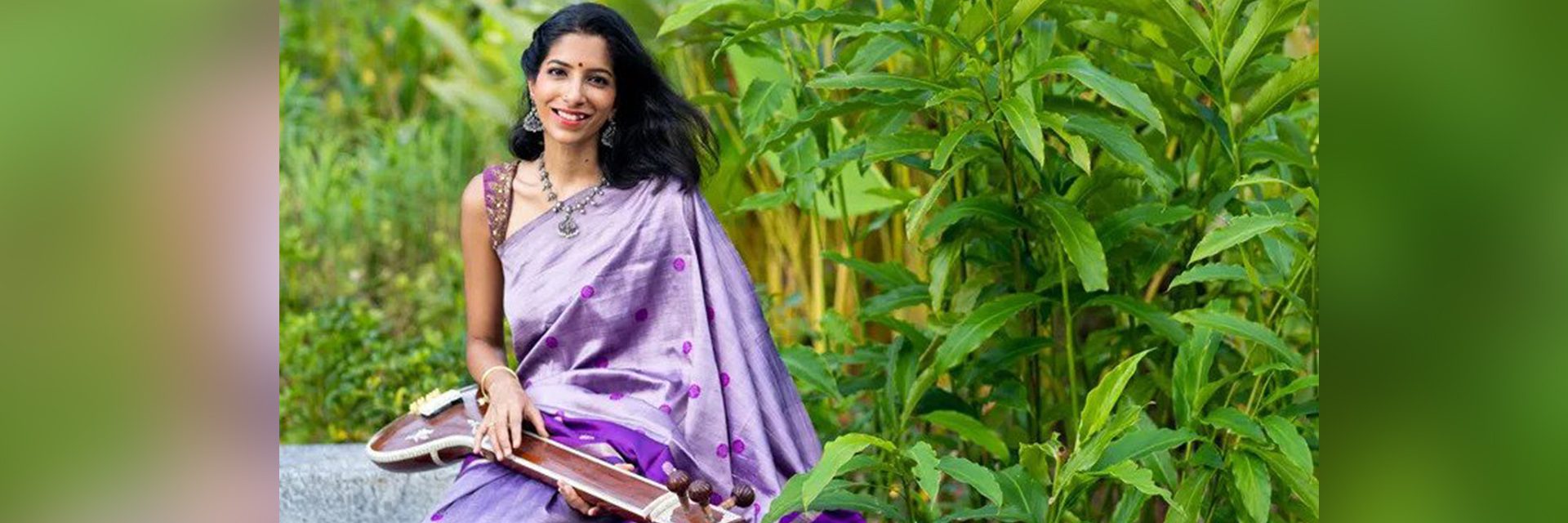(April 24, 2022) On February 19, 2022, the NG-17 Cygnus arrived at the International Space Station, with Indian-origin astronaut Raja Chari taking the lead on the mission. The Cygnus freighter spacecraft went bearing a very unusual load – The Moon Gallery. This is the Moon-Mars Mission 2022-25, an “international, collaborative art installation, housing the seeds of a future, shared interplanetary culture.” On February 18, the test payload carried 64 works of art by 100 artists from around the world. Each work is no bigger than one cubic centimetre. Among this elite group is Lakshmi Mohanbabu, the “first Singaporean artist in space.”

The Indian-origin artist and architect, who has been based in Singapore since 2001, is holding up what looks like a tiny, orange cube – a replica of the originals that are currently orbiting the Earth from the International Space Station. The intricate, labyrinth of patterns on each side, slowly become clear – these are based on the philosophy of yin and yang, she explains. Created in collaboration with scientists from Nanyang Technological University, Singapore, the process began two years ago, Lakshmi says, in an interview with Global Indian. The Moon Gallery will spend 10 months aboard the International Space Station before returning to Earth. By 2025, it will be re-launched to the moon, permanently.
“I had to create an artwork that could withstand conditions in space,” she explains, “There’s not much atmosphere, the gravity is lower and there is a huge temperature difference.” When sunlight hits the moon’s surface, the temperature rises as high as 127 degrees Celsius (this ‘daytime’ lasts 14 Earth days). When the sun goes down for a fortnight, the temperature plummets to a bone-chilling minus 173 degrees Celsius.
Preparing for a space odyssey
To start with, Lakshmi contacted the National Additive Manufacturing Innovation Cluster, who put her in touch with NTU. In collaboration with two scientists, she was presented with “a bunch of prototypes.” Settling on aluminium, the miniscule works were based on her ‘Interactions‘ series, from her days as a student of design at the National Institute of Fashion Technology, Delhi. Each painting has two sides, representing the duality of all things – the positive and negative, yin and yang- and their constant dialogue with each other.
View this post on Instagram
As a design student, she is fascinated by concepts that could encompass humanity, universal laws and countless symbols. The symbolism, she admits, “can be difficult to understand,” and she often provides detailed explanations alongside – somewhat resonant of the French modern master, Marcel Duchamp. Like him, she describes herself as a thinking artist whose works require explanation.
“The positive cannot exist without the negative,” Lakshmi says. There is no light without darkness. “My design is based on the wave form – the crest and the trough. All energy is transmitted through waves.” The “spiral,” another universal symbol – is the form of human DNA and the shape of our galaxy.
Created through 3D printing, the first cube is bright orange. “It’s about fire, progress and the energy that drives us,” she says. The second cube was made in collaboration with Dr Matteo Seita, assistant professor, School of Aerospace and Mechanical Engineering, NTU who manipulated the orientation of molecules.
Onward to the moon
View this post on Instagram
The much-anticipated moon landing is only a segment of Lakshmi’s plans. For instance, she is already in talks with NTU to create mega cubes for public spaces in Singapore and the world “As an architect, I feel like it has to occupy all spaces.” As a fashion designer, Lakshmi is “translating it into scarves and shoes, which will be sold in the metaverse. The entire series is available as NFTs on the metaverse. “I have space sounds incorporated into the animation, because it’s based on a piece of art that has actually been in space,” she says. She created a range of carpets, and is working with Singapore’s Moon Festival and its famous “moon cakes.”
Via Singapore to the Moon
Born in Trivandrum, Lakshmi never actually lived in Kerala. Her father was soon transferred to Sikkim, back when it was still a Buddhist kingdom. “There was no religion at home,” Lakshmi recalls. In the late 1970s, the family moved to Afghanistan, where Lakshmi spent the better part of her childhood. “Just before the Soviet invasion,” Lakshmi remarks. “I could hear missiles whizzing overhead – you then get used to things,” says the artist wryly. Her time in Afghanistan was vibrant, and a culturally diverse experience which also highlighted human universality.
View this post on Instagram
She returned to Manipal University, Karnataka, where she graduated with a degree in architecture, met the man she would marry, then moved to Delhi, working with Rajiv Goel Architects and Benjamin and Benjamin (now Benjamin, Benjamin and Vats). Then, surprisingly, she chose to study fashion design at NIFT, “for all the wrong reasons,” she laughs. Following her sister into NIFT. A degree in fashion design, she worked with renowned designer Tarun Tahiliani, and was part of his first-ever show. She also taught at NIFT till in 2001, Singapore came calling, and she left with her husband.
The art and its muse
Her other major series, Expressions, sits in the same philosophical space as Interactions. These paintings are instantly captivating, vibrant and bold – presenting a suite of human emotions. Again, it is the sense of universality, duality and balance that she sets out to capture. “There is joy and agony, you can’t have one without the other,” she smiles, adding, “Today, we interact constantly and travel. You visit a place, pick up something that appeals, but no matter what you do or where you go, you’re still you.”
- Follow Lakshmi on Instagram




